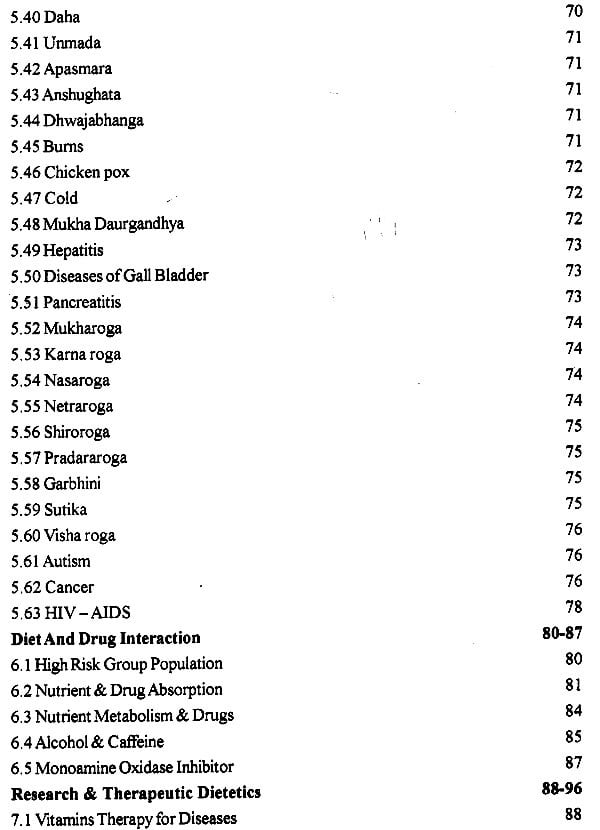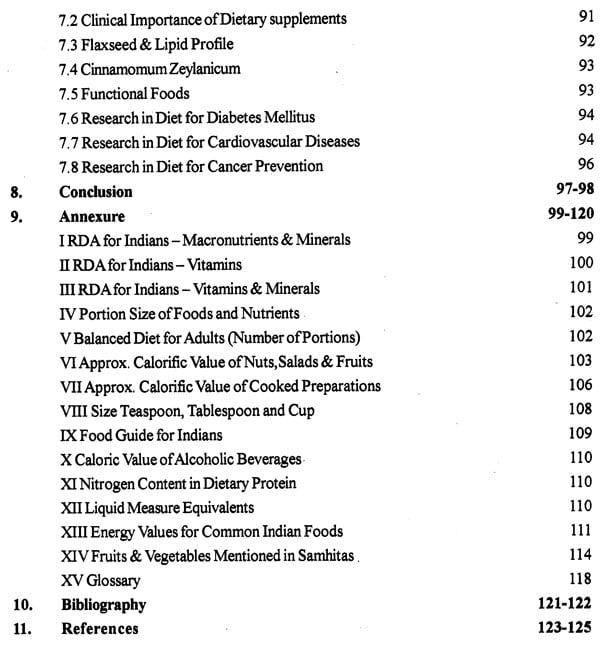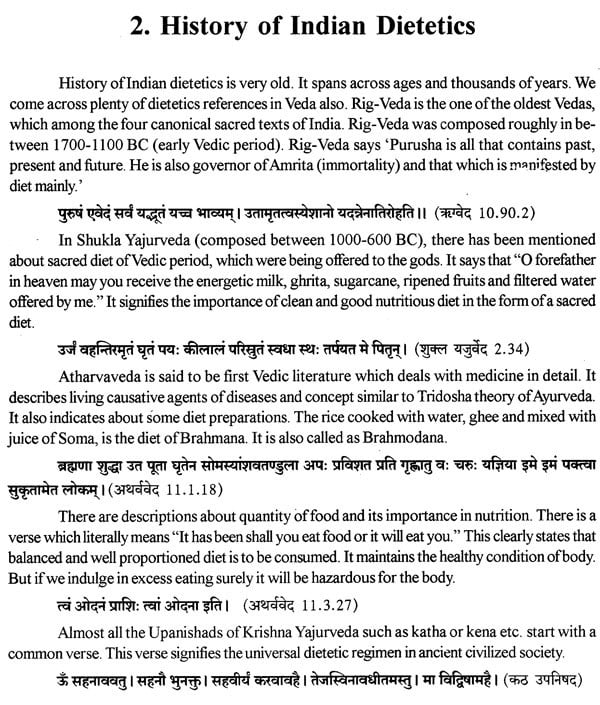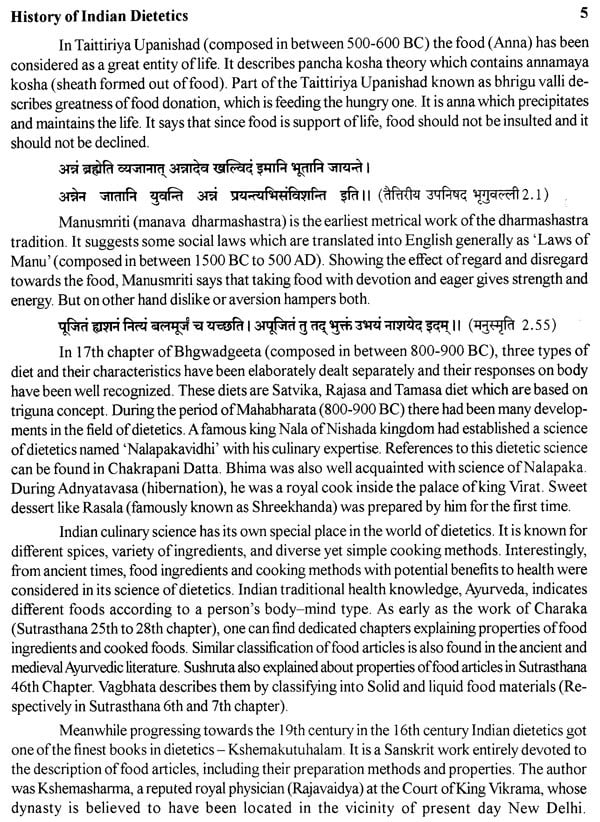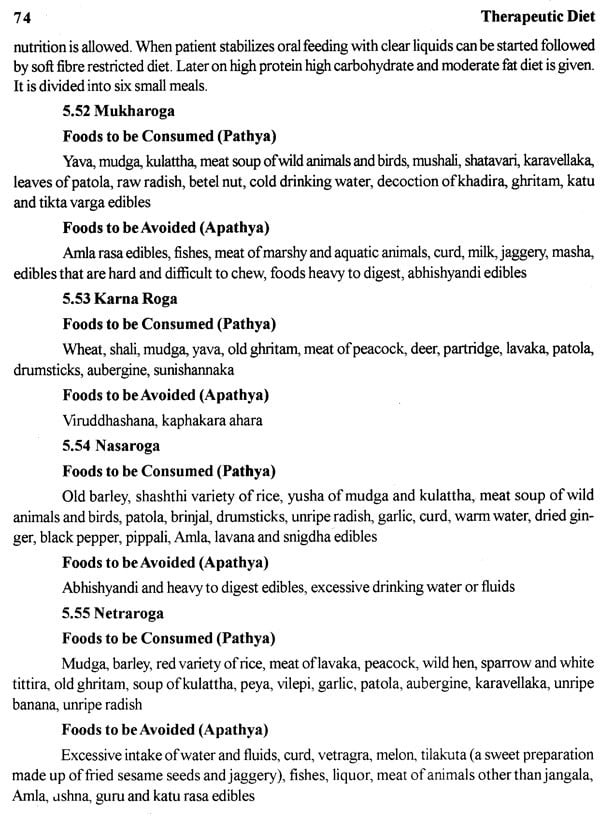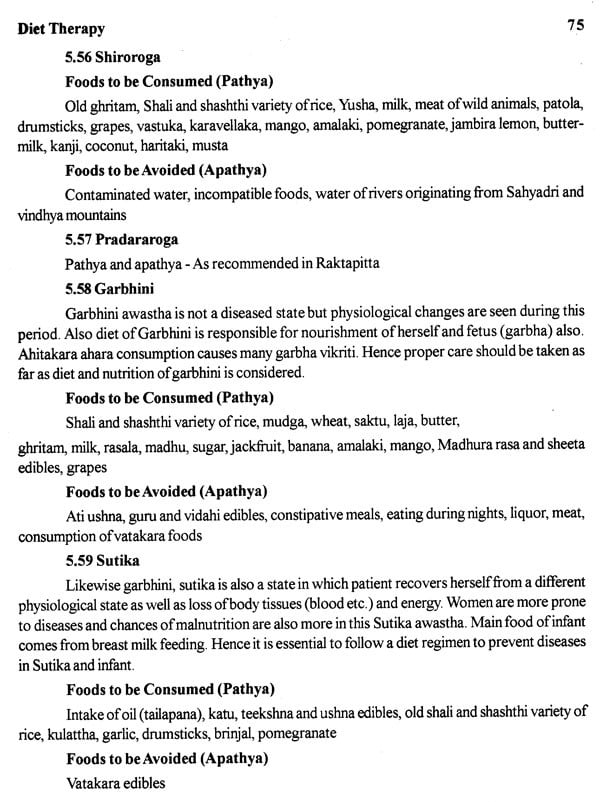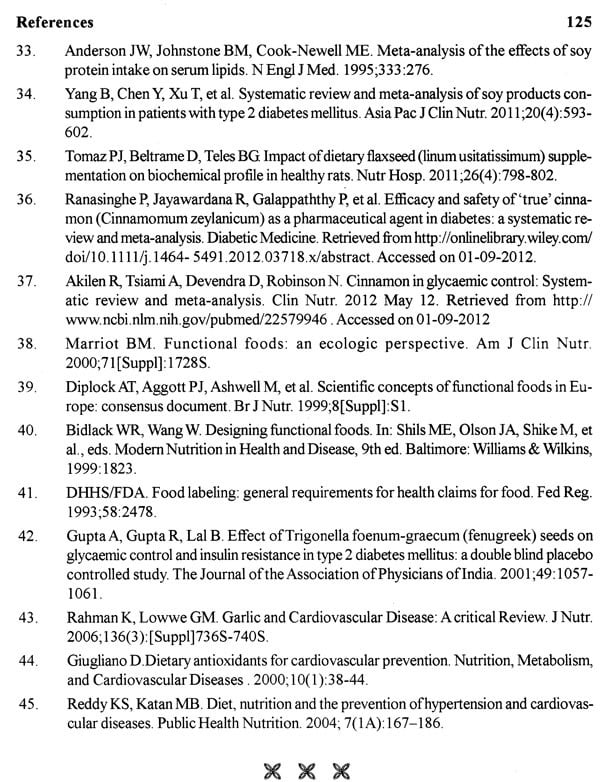
Theropeutic Diet
Book Specification
| Item Code: | NBZ935 |
| Author: | Vivek Kumar Mishra and Neha Mishra |
| Publisher: | Ayurved Sanskrit Hindi Pustak Bhandar, Jaipur |
| Language: | English |
| ISBN: | 9789384276218 |
| Pages: | 125 |
| Cover: | PAPERBACK |
| Other Details | 10.00 X 7.50 inches |
| Weight | 240 gm |
Book Description
The key roles of Ayurveda dietitians is to contribute to the promotion of health, the prevention of ill health and the application of Ayurveda medical nutrition therapy for acute and chronic conditions. The role of therapeutic nutrition has always been given highlighted in Ayurveda, where it is associated with Shamana Aushadi or Shodhana karma. Assessment of Nutritional status of an individual is the foremost thing for planning a therapeutic diet where various factors like Prakriti, Vikriti play an important role.
The concepts of planning a therapeutic diet after the assessment of nutritional status are deeply coded in Ayurveda. Rasa, Guna, Veerya and Vipaka of Ahara varga along with Ahara vidhi Vidhana, Vishesha Ayatana and Ahara pravicharana are important in planning this. Along with this, the cooking style varies from region to region. In modern times Indian pallete has undergone a lot of change. In the last decade, as a result of globalisation, a lot of Indians have travelled to different parts of the world and vice versa there has been a massive influx of people of different nationalities in India. A properly planned therapeutic diet would take into consideration all the above factors.
This book would create an interest in the students in understanding these concepts and help in planning Ayurveda therapeutic nutrition.
The idea of writing a book seeded when I was doing my post graduation, especially when I had to sit with piles of different books to search the topic for my study. I felt it would be beneficial if all the essential aspect of therapeutic deities included in a single book. The idea was nourished by my family members and friends resulting in a fruit in the form of present book. The subject is arranged in a format, which I thought would be appealing for the students studying swasthavritta and naturopaths.
Apart from brahattrayis and laghuttrayis other books have also been consulted for collecting the relevant references. The major aim of this book has been to analyze ayurvedic and modern aspects in a comparative manner. At this moment of accomplishment, first of all I pay respect to my M.D. guide; Dr. K. V DilipkumarMD (Ay) Professor Department of Swasthavritta, whose true scientist intuition has exceptionally inspired and enriched my escalation as a student as well as a scholar and I am indebted to him for his supervision, advice and guidance throughout this book.
I am thankful to Principal Dr.VK Sharma and college management Dr. Ravish Alam Khan, Dr. Akram and Mohd Uzzaire for their valuable suggestions and timely support.
At this moment I am realizing the affection of friendship and I am taking this chance to acknowledge my senior doctors and colleagues Dr. Ravindra, Dr. Surndra, Dr. 0. P Arya, Dr. P K. Johari Dr. Prashant, Dr. Javed, Dr. Adavesh, Dr. Neeraj, Dr. Shadab, Dr. Beena, Dr. Neetu, Dr. Divya, Dr. Ravikant and Dr. Jyoti for their sensible support.
At this point it is worth to mention the affection and support given by my family members especially my grandparents Smt. Maya Devi&Sri K.S. Mishra, my parents Smt. Savita Mishra and Dr. A.K Mishra my special pleasure and fortune to thanks my in-laws parents Smt Sarla Mishra and Dr. R. D. Mishra for their immense support, blessings and love, which helped me a lot and my nephew Ishaan & son Yashmit.
Ayurveda revolves around Tridosha theory and suggests that trayopastambha (Ahara, Nidra and Brahmacharya) is the basis of life. Out of three upastambhas (Supports of life) diet has been given more importance and considered to be best in Ayurveda. The ancient medical science of India has considered that diet nourishes the body and also restores balance of tridoshas essential for maintaining health by producing biological factors within our bodies to protect cells and rebuild damaged cells.
A proper, skillful and optimum use of this triad leads human body to maintain its integrity, being enriched with bala (Physical and immunological strength), varna (Complexion) and upachaya (growth/ nourishment). This process goes on till full length of life, provided the person concerned does not get involved in the regimen detrimental to health.
The significance of Ahara can be traced back to intra-uterine life. During these days, it is mainly met by mother but Ahara embodies all the shadarasas which generates and controls all the doshas and contributes in formation of all the dhatus. Diet of a person is the sole source of energy, growth and sustenance of life. Supporting this fact Charaka says that sinful acts and unwholesome diet are the two important factors for causation of disease.
Book's Contents and Sample Pages


